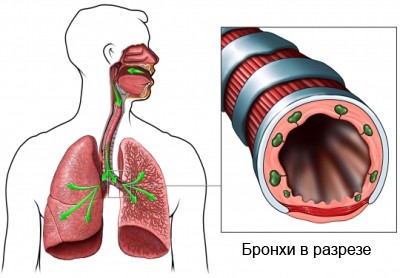Mediastinoscopy – Edoskopicheskoe study of the mediastinum
Description mediastinoscopy
Mediastinum – area in the middle of the chest between the lungs. Mediastinoscopy is a procedure for the inspection of the area inside the chest.
Handset with lighting device (mediastinoscopy) introduced into the upper part of the chest through a small incision. The light allows the doctor to look in detail at the mediastinum.

When performed mediastinoscopy?
The procedure is done to examine the lungs and chest. The doctor may take tissue samples (biopsy). These samples were examined under microscope, You can test for certain diseases:
- Lung cancer, bronchi, and chest tissue;
- Lymphoma, cancer of the lymphatic system (eg, Hodgkin's disease);
- Infection;
- Inflammation;
- Sarkoidoz, disease, which causes swelling (inflammation) in such bodies, as the lungs, liver, lymph nodes and spleen;
Mediastinoscopy is also done, to find out, How common is lung cancer.
Possible complications during mediastinoscopy
Complications are rare, but no procedure does not guarantee the absence of risk. Before, how to perform a mediastinoscopy, you need to know about possible complications, which may include:
- Bleeding;
- Infection;
- Hripota;
- Chylothorax – lymphatic fluid leaks into the chest;
- Lesions of the breast;
- Pneumothorax (collapsed lung).
Factors, that may increase the risk of complications include:
- Previous mediastinoscopy, chest or neck surgery;
- Pregnancy;
- Diabetes or other chronic disease;
- Smoking.
How is mediastinoscopy?
Preparation for the procedure
The patient will be asked to stop eating and drinking for 8-10 hours before the procedure. The doctor may prescribe the following:
- Assign some medications before the procedure;
- Stop taking medications, such as insulin, aspirin, or blood-thinning medicines.
On the day of the procedure:
- We must remove all jewelry, glasses, contact lenses or dentures;
- Patients may be given medicines, that will help him to feel sleepy and relaxed;
- Be sure to inform your doctor about allergy;
- We need to organize a trip to the procedure and back home.
Anesthesia
The patient receives general anesthesia drip in the arm or shoulder. Anesthesia will block any pain and supports the patient is able to sleep throughout the procedure. After the examinee sleeps, in his throat placing a breathing tube, to help to breathe.
Procedure mediastinoscopy
- The patient will lie on the operating table on your back;
- The skin is cleaned with an antiseptic solution;
- The doctor makes a small incision at the base of the neck, just above the sternum;
- Then divided muscles of the lower neck and mediastinoscopy is inserted through a hole;
- Light mediastinoscope will help the doctor see the space between the lungs and heart;
- The doctor may take tissue samples from the lymph nodes or other parts of the breast;
- When the inspection is completed, the doctor removes mediastinoscopy and sews the hole;
- On incision bandage.
Immediately after treatment
After the procedure, the patient will be sent to the recovery room. If all went well, breathing tube is removed.
Tissue samples are sent to a laboratory for testing.
How long will mediastinoscopy?
From 30 minutes before 2 hours.
Mediastinoscopy – Will it hurt?
General anesthesia does not allow to experience pain during surgery. The doctor may give pain medication after the procedure.
The average time of stay in the hospital after mediastinoscopy
This procedure can be done on an outpatient basis or as part of the stay at the hospital.
Usually stay up 24 hours, if there were no unforeseen complications. Some patients, perhaps, will have to stay in the hospital 1-2 day.
Care of the patient after the procedure mediastinoscopy
Care in a hospital
- After surgery, the patient is sent to the recovery room , until the anesthesia wears off;
- Your doctor may prescribe chest X-ray, to check for bleeding or air in the thoracic space.
Home Care
Upon returning home, you need to perform the following actions, to ensure the normal recovery:
- It may feel sleepy during several hours or even 1-2 days after anesthesia. You can not get behind the wheel at this time;
- The patient may have a sore throat after the placement of the breathing tube;
- You can use candies, to relieve sore throat;
- It recommended to gargle with warm water;
- It is necessary to keep the wound clean and dry:
- Be sure to wash your hands before touching the wound;
- We need to use a soft sponge to wash dishes, to gently wiped the wound with soap and water;
- The dressing should be changed in accordance with the instructions of the doctor;
- Be sure to follow your doctor's instructions.
Contact your doctor after mediastinoscopy
Upon returning home, you need to see a doctor, If the following symptoms:
- Redness, edema, pain or bleeding from the wound;
- Chest pain;
- Swelling in the neck;
- Difficulty swallowing;
- Hoarseness, that lasts more than a few days or worsens;
- Breathlessness;
- Signs of infection, including fever and chills;
- Joint pain, fatigue, constraint, rash or other symptoms of the disease.
